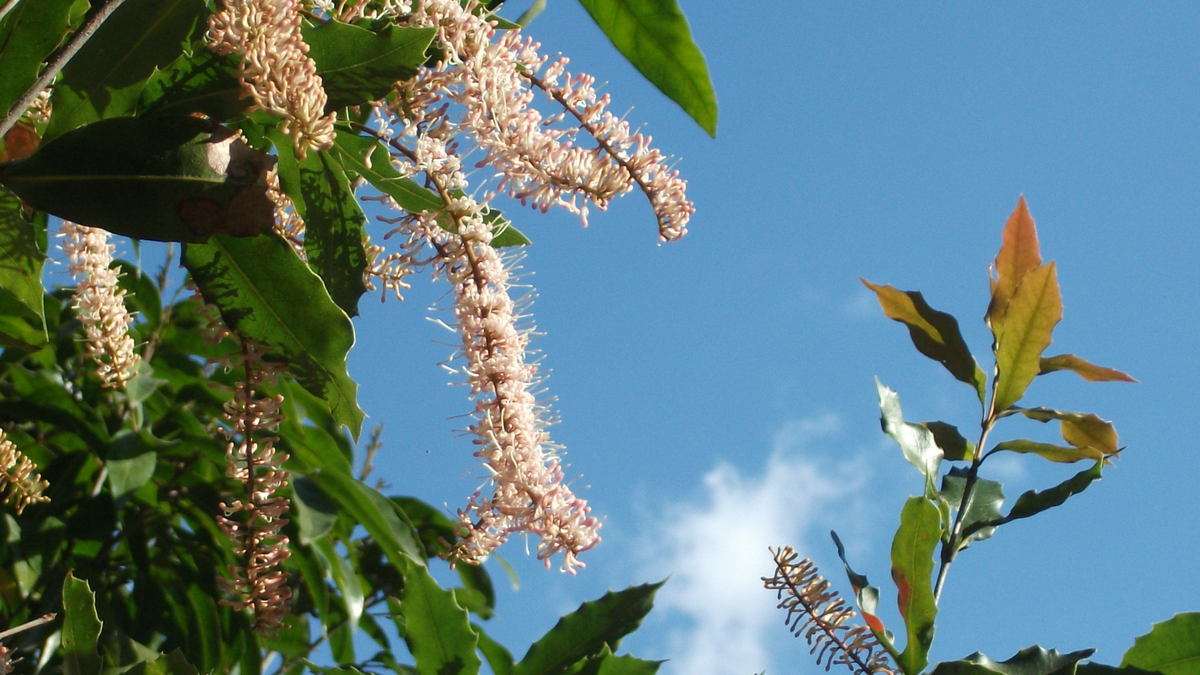The four macadamia species are quite distinctive, but it took a long time for botanists to sort them out and formally describe them as separate species. Macadamia ternifolia was the first scientific name given to macadamias by Ferdinand von Mueller in 1857 and it took another 100 years before the three main species were clearly distinguished from each other by Queensland Government botanist Lindsay Smith in 1956.
The name ternifolia refers to its three leaves per node, terni-folia meaning three-leaves in Latin. This feature is also shared by a second species found on the Sunshine Coast. Despite one species having edible nuts and the other not, they were all initially called Macadamia ternifolia, leading to much confusion with mislabeling of early herbarium specimens.
Macadamia integrifolia can be distinguished by the smooth leaf edges on its adult leaves. Integri-folia, means integrated leaf. In contrast the adult leaves of Macadamia ternifolia have a serrated edge.
Macadamia tetraphylla is even easier to distinguish as it has four prickly leaves often symmetrically arranged (like a cross). Tetra-phylla means four-leaves in Greek.
The forth species Macadamia jansenii is not named for its leaf shape but was named in honour of local naturalist Ray Jansen.
So where does Macadamia ternifolia oil come from? The answer is … it doesn’t. The cosmetic industry has stuck with an outdated name, so when a shampoo or moisturiser lists Macadamia ternifolia as an ingredient, you can be confident that it is really the commercially grown variety, Macadamia integrifolia.
For more information on macadamias visit the Macadamia Conservation Trust's website.
